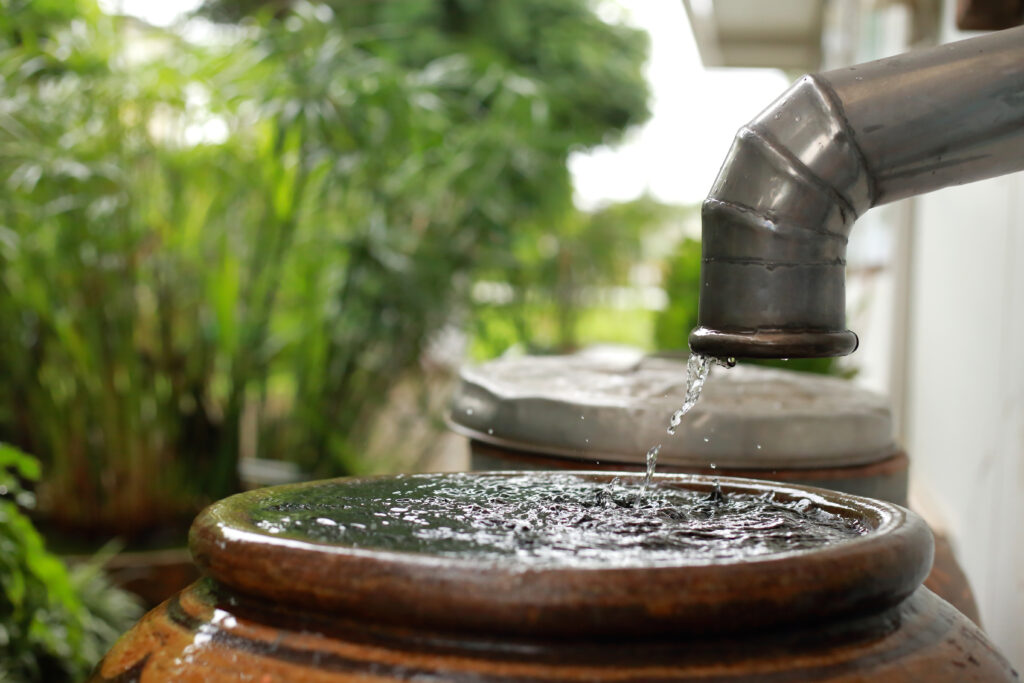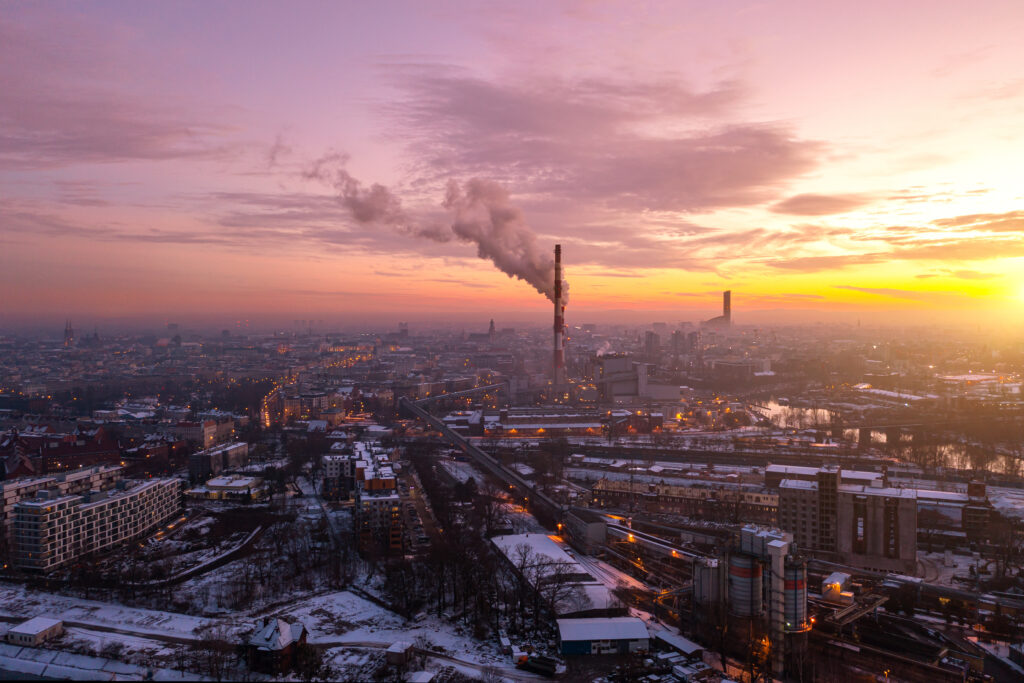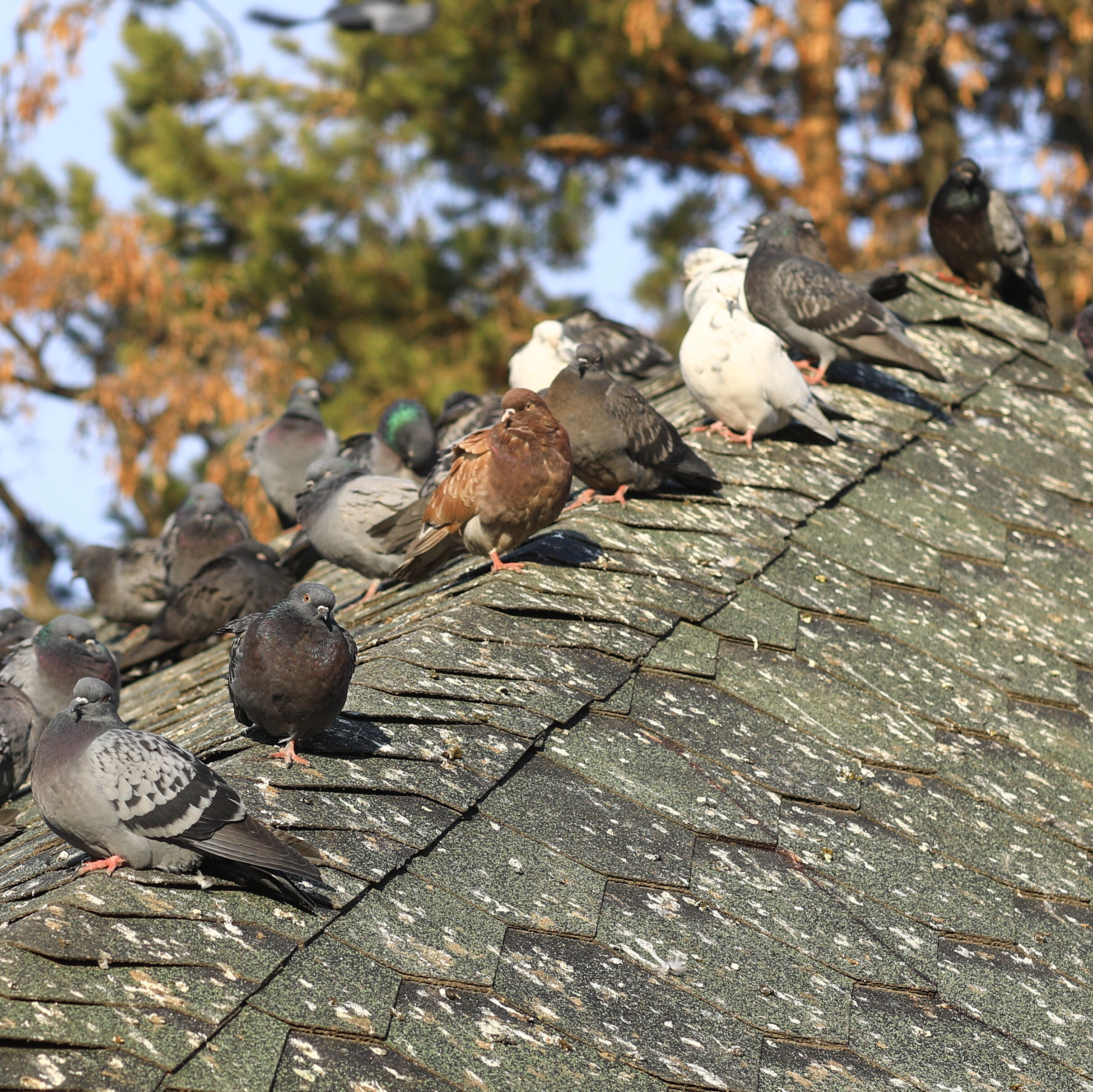Rainwater collected directly from the sky, meaning not collected from any surface such as a roof, can be pure, safe water that is okay to drink. On the other hand, rainwater that has first flowed over a surface can pick up contaminants and debris from animals, plants, and remains which can contain pathogens. Pathogens are bacteria, parasites, or viruses that can be harmful to human health and can cause illness.

Chemicals picked up in the air or released from roofing materials can also be of concern. However, pathogens are the main source of concern and why it is often not considered okay to drink rainwater. This is especially true in basic rainwater harvesting systems without many accessories and with little maintenance.
A basic rainwater harvesting system is any rain collecting setup that does not include a method of water treatment. The phrase “water treatment” is used to mean any method capable of removing chemicals, microscopic organisms or viruses that may be present and capable of causing harm to a human being or animal. Rain collection systems should have filtration and a disinfection method in place and properly used before being okay to drink. Examples of effective rainwater treatment include filtration, ultraviolet (UV) light, and chemical treatment.
In this post:
- What Makes Harvested Rainwater Unsafe to Drink
- What Affects How Clean My Rainwater Harvest Will Be
- How Do I Know If My Rainwater Harvest is Unfit for Drinking
- Common Contaminants and Concerns
- Recommendations for Cleaning Rainwater so it is Safe to Drink
What Makes Harvested Rainwater Unsafe to Drink?
The foremost concern when drinking harvested rainwater are microorganisms that can cause illness. The primary source for these microorganisms is from animal activity, most notably animal droppings (i.e., feces, poop). There is some concern for the remains of dead, decomposing animals; however, this is fairly limited in comparison as animals are much more likely to leave fecal matter on a roof than to die on it. Research indicates that the animal droppings from birds, mammals, and rodents are the primary source of potential disease-causing microorganisms that may make their way into rainwater.
Other highly variable and location-specific concerns for drinking rainwater can be attributed to nearby human activity. For an individual that is harvesting rainwater “down-wind” or very near to bulk industrial facilities or large agricultural operations, there may be a concern for associated chemicals to make their way into the rainwater that is harvested, albeit likely in fairly small amounts due to the size of the area and dilution in the atmosphere.
Please note and consider, these statements are intended to be informative and should not cause undue alarm. Most health organizations and departments advise against drinking rainwater collected from a roof or long-term stationary structure and people would like to know why. The concerns listed this far are why. Even though the probability may be low and is highly variable on the exact conditions and settings, the advisory holds as a general safeguard for public health as there is a probability.
What Affects How Clean My Rainwater Harvest Will Be?
Simply put: where you live and how you set up your rainwater harvesting system are the factors that will affect how clean your rainwater harvest will be. As mentioned before, the main concern for contamination arises from animal activity on the roof followed by whatever materials or chemicals may end up there.
If you live in a wooded area, near a forest, park or other region with significant wildlife activity that you may find on your roof on occasion, then the likelihood of rainwater impact increases.

If you are located in a metropolitan area, then chemicals and materials from human activity may be the most likely concern.

If you live in an arid, mountainous, or open rural area, then the likelihood of either animal or human driven contamination risks significantly decrease.



How Do I Know If My Rainwater Harvest is Unfit for Drinking?
There are two ways if your rainwater will be unfit for drinking. The first is an assumption and the second requires analytical testing.
For the first, if you observe or know to have any animal activity on your rain catchment area (e.g., roof), then it is safest to assume your rainwater harvest is unfit for drinking. As a default safety measure, any and all rainwater harvested from a catchment surface is considered unfit for drinking until properly treated. While the example image may be an extreme case, it still demonstrates how animal activity has a high potential to dirty a surface for rainwater harvesting.

The second way requires analytical testing by a certified laboratory. A laboratory certified in water analysis will be able to determine the exact contaminates in the rainwater and if they are at levels that should cause concern. This usually requires scheduling, taking a sample in a provided or approved container, and shipping it off for testing. For lab analysis of rainwater, working with a nearby or local lab is recommended.

So, My Rainwater is Unfit for Drinking, What Are the Common Contaminants and Concerns?
As mentioned, microorganisms that can be present in animal droppings from birds, mammals, or rodents are the most common contaminants for concern with harvested rainwater. By name, the most common microorganisms or family types include Cryptosporidium, Giardia, Escherichia Coli and Campylobacter.
In most instances, the illnesses caused by these microorganisms are not life threatening except in extreme cases and individuals with a compromised immune system. Even in non-extreme cases, they can cause serious illness leading to a hospital visit and treatment.
In comparison to microorganisms, (i.e., bacteria, parasites), being exposed to an animal-borne virus is rare. This statement is based on statistics, reported events, and likelihood as it is an uncommon route of exposure for disease vectors belonging to this category.
Recommendations for Cleaning Rainwater so it is Safe to Drink
The recommendations for cleaning your rainwater so it is safe to drink are simple and based on scientific evidence, results, and reports. You can even have your water tested for proof and reassurance. To reach potable grade rainwater, the top recommendation is to use a multistage cartridge filter and UV light treatment. A proper filtration and UV light setup can be effective in personal to large scale rainwater harvesting systems.
The multistage cartridge filter should include at least a sediment filter and carbon filter and should step down in pore size to a minimum 4 or 5 microns in size. The filter is recommended to be ANSI/NSF 53 certified. The UV light treatment equipment should be a Class A rated system that is ANSI/NSF 55 certified. A water pump will be required for this rainwater treatment setup and for the equipment to properly work. A secondary tank or pressure tank is also recommended and is often included after treatment to store the purified rainwater.
The proper setup will use a water pump to draw and pressurize rainwater from the collection container, followed by a multistage cartridge filter, and lastly treated by a UV light treatment system. Some UV light water treatment systems include multistage filters built in for an inclusive, effective product.
Takeaway | Why Should I Not Drink Rainwater (Before Treating It)?
Rainwater may have microorganisms and other unwanted contaminants in it as a result of the surfaces and path the rain took to reach your collection container and therefore should not be used for drinking or any other potable water application without first being properly treated.
If looking to implement a potable grade rainwater harvesting system, the National Tank Outlet provides ANSI/NSF 61 certified rainwater collection tanks, as well as water pumps and in-home potable rainwater treatment systems with cartridge filters and UV light.
Contact our professional support team should you have any questions on rainwater harvesting equipment and implementing the right system for your setup.